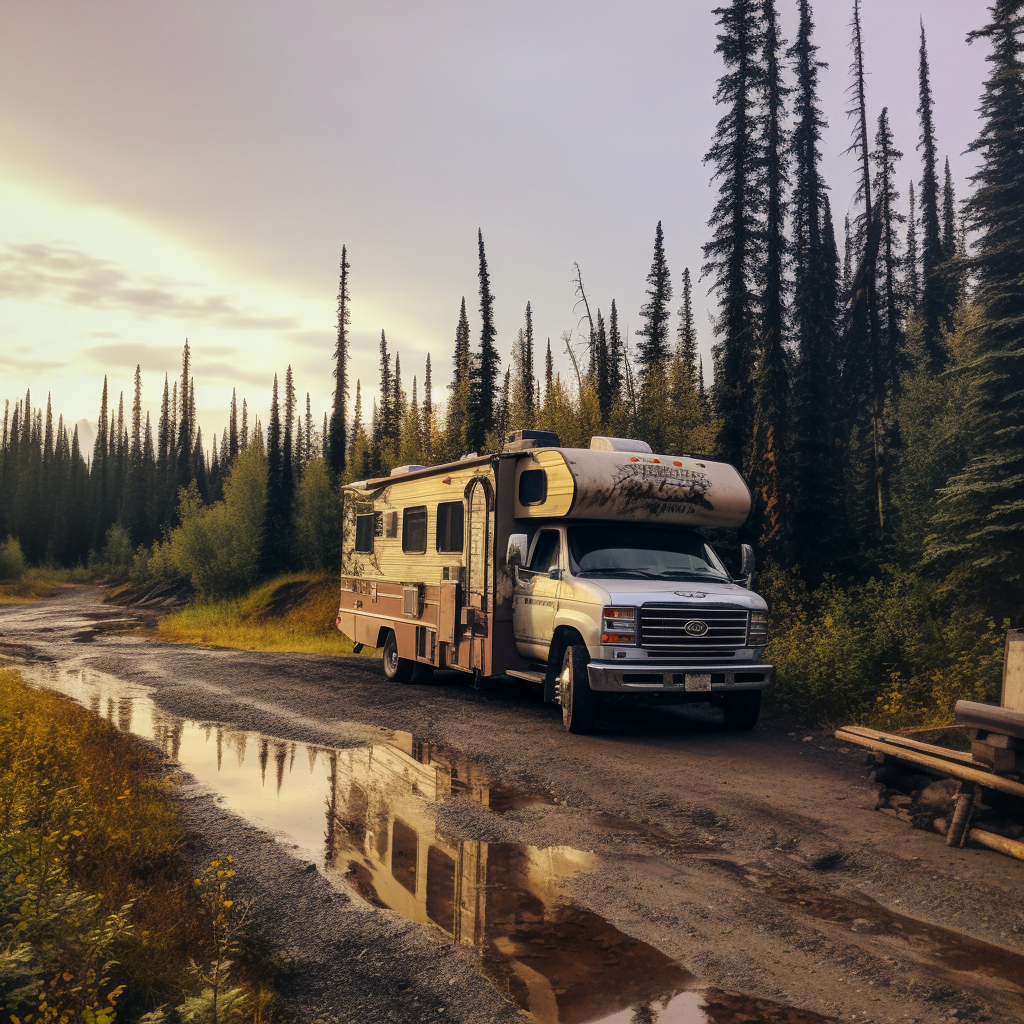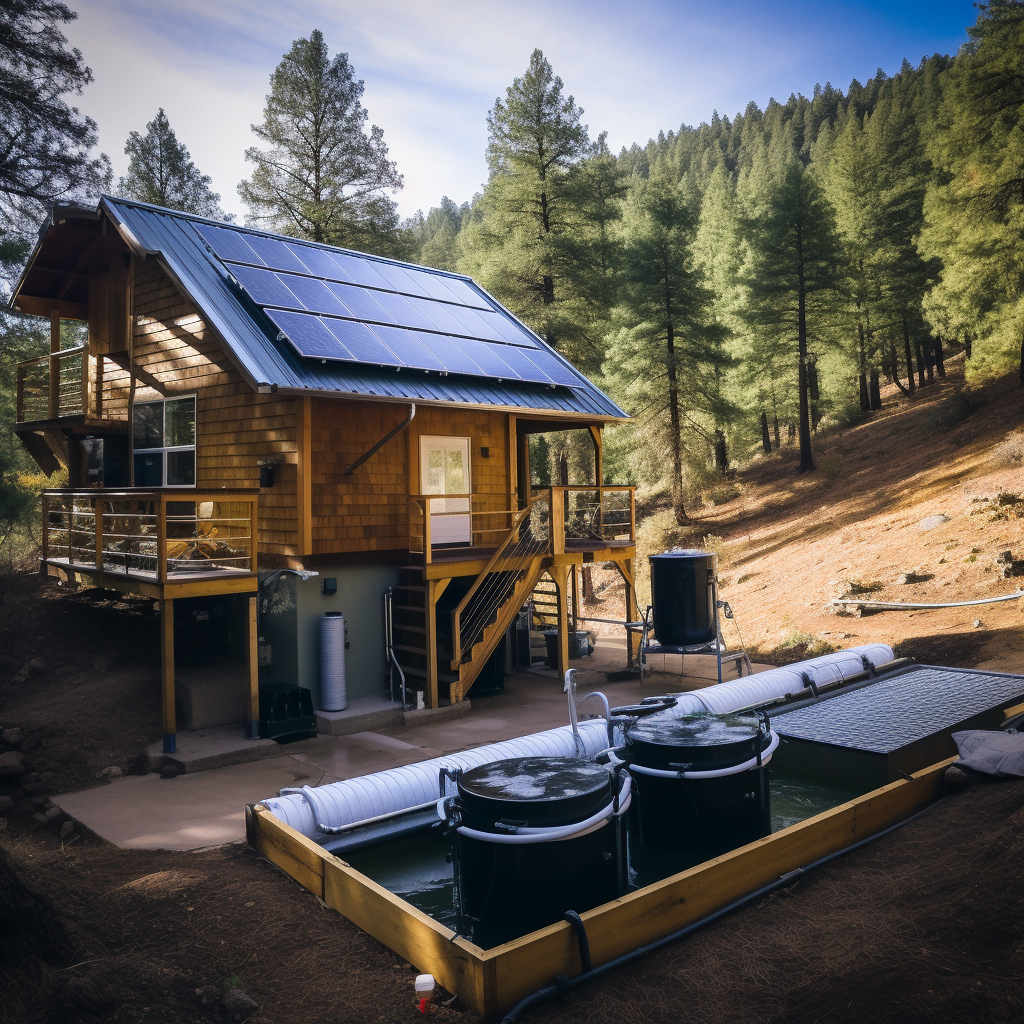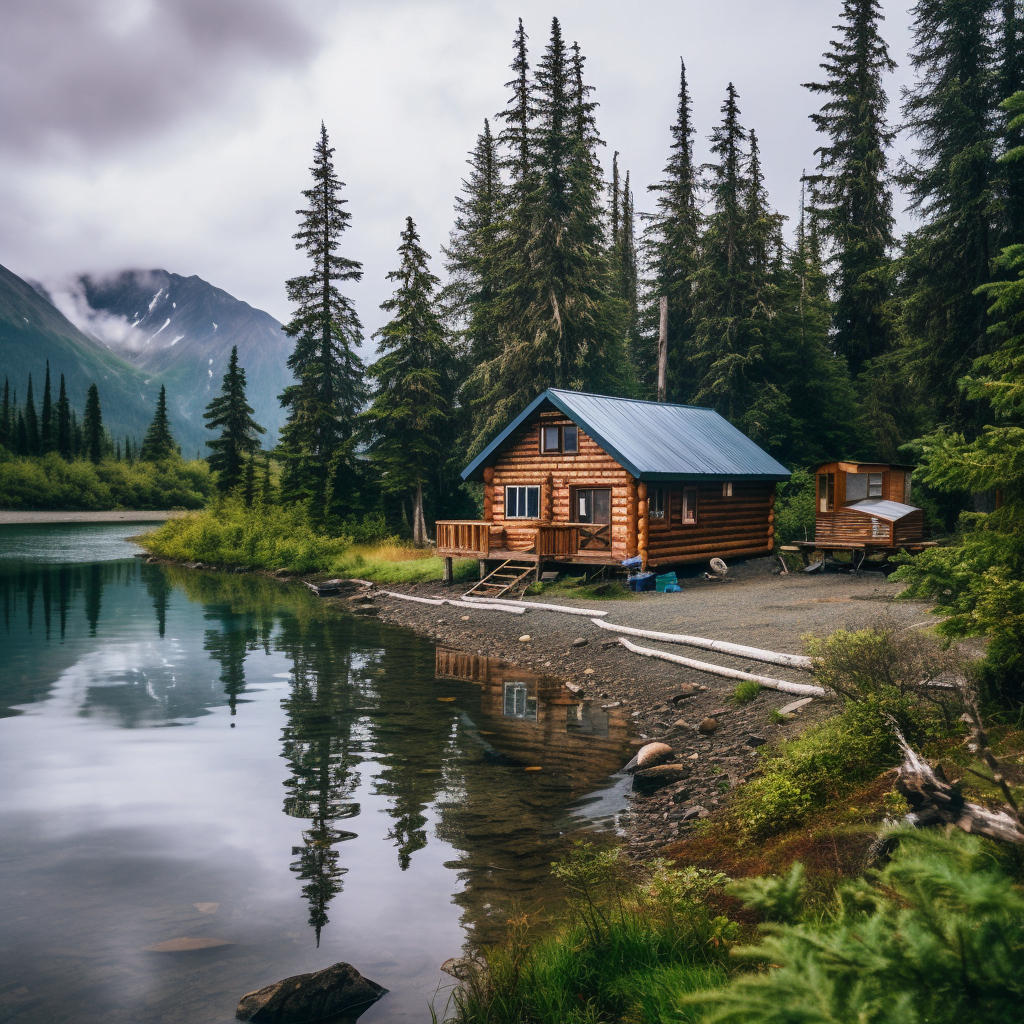Living off the grid in Alaska can provide freedom, sustainability, and adventure. However, it’s important to understand the legal issues involved before embarking on an off-grid lifestyle. This extensive guide covers everything you need to know about legally living off the grid in Alaska. So.. What are the Laws for Living Off the Grid in Alaska?
Defining the Off-Grid Lifestyle
Living “off the grid” means disconnecting from public utilities like electricity, water, sewage, and more. Instead, off-grid residents generate their own energy and obtain water and food through renewable sources. Some key aspects of the off-grid lifestyle include:
- Using renewable energy like solar panels or wind turbines instead of connecting to the electrical grid. This allows complete energy independence.
- Collecting rainwater or drilling a private well for water needs. This eliminates the need for municipal water hookups.
- Composting toilets, greywater systems, and proper waste disposal instead of using municipal sewage lines and treatment facilities.
- Growing your own food, foraging, hunting, and/or raising animals for eggs, meat, etc. This provides a sustainable food source.
- Building sustainably using materials like cob or rammed earth. These natural building techniques are eco-friendly.
- Living in a small, energy efficient space such as a cabin, yurt, or tiny home. The smaller the home, the less energy needed to heat and power it.
The goal of off-grid living is to disconnect from public utilities and become self-sufficient without the need for any municipal services. It provides freedom from the costs and restrictions of traditional infrastructure while living sustainably with minimal environmental impact. Off-grid living allows reconnecting with nature and leading a simpler, minimalist lifestyle.
Is Living Off-Grid Legal in Alaska?
The good news is that it is 100% legal to live off-grid in Alaska. There are no laws prohibiting disconnecting from electrical, water, sewage, or other public utilities. Alaska residents have the right to generate their own electricity, drill private wells for water, install composting toilets, and undertake other off-grid living activities. Alaska’s abundant land and libertarian ideals make it one of the best states for legal off-grid living.
However, there are some regulations around zoning, construction, sanitation, and land use that off-grid residents must follow. Specific ordinances vary between different boroughs and municipalities, so its crucial to research the laws in your desired geographic area. We’ll cover key statewide regulations and considerations later in this article. But in general, with proper preparation and compliance, you can legally disconnect from the grid and live self-sufficiently in Alaska.
Choosing Land for Off-Grid Living
The first step is selecting and purchasing or leasing suitable rural land for off-grid living in Alaska. Look for large, remote parcels with ample solar exposure, wind resources, fresh water availability, and natural resources. Be sure to thoroughly research the land, including:
- Zoning restrictions – Some boroughs prohibit residential structures on certain land or have minimum lot sizes. Make sure residential living and any required utilities/structures are legal on the parcel.
- Easements or right of ways across the property – Existing easements could restrict construction or resource usage.
- Accessibility – Remote properties may require bush planes or other specialized access. Make sure you can feasibly reach your land.
- Soil suitability – Consider having soil samples tested to assess suitability for septic systems, agriculture, etc.
- Whether ground wells are feasible for water access – Research typical well depths and yields in the area.
- Solar and wind energy potential – Estimate expected solar PV output and average wind speeds.
- Hunting, fishing, and foraging resources – Proximity to lakes, rivers, forests, etc.
Ideally select land with ample natural resources but far enough from any neighbors to allow privacy and independence. Properties located within certain Alaskan native corporation boundaries may have additional easements or restrictions, so research thoroughly.
Once you’ve purchased land, there are regulations around developing it:
- Obtain proper permits before building any residential structure, such as a cabin or yurt. Permits are required for new builds but may be flexible for temporary shelters.
- Comply with all relevant zoning laws such as setback requirements, easements, wetland buffers, etc. Make sure your planned build sites, septic location, and other infrastructure conform.
- Follow all rules for sanitation if installing a septic system. Permits, site evaluations, and designated leach fields are often required.
- Consider starting small with a temporary RV or tent while establishing your off-grid systems. Then upgrade to a code-compliant permanent dwelling.
Be sure to align your development plans with applicable codes and secure the necessary permits before starting construction. This saves hassles down the road.

Generating Your Own Electricity
One of the biggest steps in establishing off-grid living is developing your own electric power system. Solar panels and wind turbines allow Alaska off-gridders to generate their own electricity indefinitely without any utility bills. However, there are some legal considerations:
- Research municipal ordinances which may restrict the placement, size or height of wind turbines, solar panels, and associated equipment. Obtain any required permits.
- Batteries used for energy storage should be properly enclosed and vented to avoid dangerous battery fumes and comply with codes.
- Using backup generators also requires permits and compliance with emissions, noise, and electrical codes. Don’t skimp on safety.
- Consider leasing land for wind farm construction rather than buying it. This avoids large upfront costs.
- Join forces with neighbors to invest in shared community renewable energy infrastructure if appropriate.
Tips for an Efficient Off-Grid Electricity System
Optimizing your solar or wind system will make living off-grid easier. Recommendations include:
- Use solar trackers to maximize solar gain throughout the year. Adjustable mounts increase output by 40%.
- Have ample battery storage to supply 3-5 days of backup power during cloudy and windless periods. Lithium batteries provide long life and performance.
- Incorporate a biodiesel, natural gas, or propane generator for supplemental backup power when needed.
- Choose highly efficient LED lighting, appliances, and electronics to minimize energy needs.
- Take advantage of net metering if you remain connected to the grid. You can get credit for contributing surplus energy.
- Start small and add capacity over time as your needs and budget allows.
With prudent system sizing, equipment selection, and proper operation, you can power an off-grid homestead indefinitely, free from the electrical grid.
Obtaining and Storing Water Off-Grid
Accessing water is another essential consideration for off-grid living in Alaska. While public water hookups aren’t an option, there are other legal methods to obtain sufficient water:
- Drilling a groundwater well – Permits are required before drilling wells in Alaska, and wells must be constructed properly against contamination. Research typical well yields and depths in your area. Test water quality regularly.
- Rainwater catchment from roofs and other structures – In most areas, small scale rain catchment doesn’t require a permit. Use clean collection tanks and divert initial rinse water.
- Snow collection and melting – Similarly to rainwater, collecting and melting clean snow provides a water source.
- Transporting water – Where onsite water isn’t viable, water could potentially be transported via trailer, truck, or barge tanks. Research regulations.
Proper water storage, treatment, and conservation are also crucial:
- Store collected rain or well water in opaque, UV-sanitized plastic tanks to prevent algae growth. Cover tanks against debris and insects.
- For drinking water, boil, filter, distill, or disinfect using bleach or UV treatment systems. Test for any bacterial contamination.
- Take measures like low-flow fixtures, composting toilets, greywater reuse, and behavior changes to conserve water.
- Drain outdoor water pipes and hoses during freezing weather and insulate where possible. Consider underground lines.
By using the right collection, storage, treatment and conservation methods, an off-grid home can be comfortably supplied with water in Alaska’s remote landscapes. Just take precautions to protect water quality.
Managing Waste and Sewage Off-Grid
Without access to municipal trash collection and sewage lines, off-grid Alaska residents must find eco-friendly solutions for waste management:
- Composting toilets are a great option as they don’t require water and create usable compost rather than sewage. There are many models to choose from.
- Greywater from sinks, showers, etc can be filtered through constructed wetlands, sand filters, or reused for irrigation. Don’t contaminate water sources.
- Trash should be properly separated, stored against animals, and disposed of regularly at a transfer station. Hazardous waste also requires special disposal.
- For food waste, use small-scale composting or vermicomposting to reduce waste volumes.
- Consider adding a septic tank or outhouse as a backup to composting toilets, where suitable.
The key is using multiple waste streams rather than relying solely on wasteful sewage systems. With some creativity and the right permits, you can manage waste safely off-grid without fouling Alaska’s pristine lands and waters.
Foraging, Gardening, and Raising Animals
Alaskan homesteaders rely heavily on self-produced food from organic gardens, greenhouses, foraging, fishing, hunting, and raising livestock. However, adhere to all regulations regarding foraging, gardening, and livestock:
- Follow all Alaska fishing and hunting regulations. Acquire proper tags and know season dates, bag limits, restricted areas, etc.
- Foraging wild edibles like berries, mushrooms, fiddleheads also falls under Alaska’s plant gathering regulations. Don’t overharvest sensitive species.
- Adhere to land use rules if clearing forest areas for gardening plots. Some areas prohibit clearing streamside vegetation.
- Abide by relevant zoning laws if keeping chickens, rabbits, goats, etc. Not all livestock may be allowed. Manage noise and smells.
- Use electric fencing around gardens and orchards to fend off bears and moose from feeding on crops. Keep Bee hives out of animal’s reach.
- Build sturdy greenhouses, cold frames, and hoop houses to maximize short growing seasons. Use cold-hardy, fast growing crops.
- Consider aquaculture farming of fish, oysters, and kelp. This provides sustainable seafood and income.
Become knowledgeable of Alaska’s diverse wild edibles. Preserve or can fish and game. With smart preparation and management, small-scale agriculture and ethical hunting/gathering can supply an off-grid family’s food needs in Alaska’s remote regions.

Off-Grid Power Solutions for Alaska’s Extreme Climate
Maintaining sufficient power year-round in Alaska’s long winters and cold temperatures poses challenges for off-grid living. Here are some solutions:
- Store 6 months of backup propane/gas for generators – the lifespan is longer than diesel in cold.
- Use lithium batteries with maximum cold temperature performance ratings.
- Install wind turbines on high towers to access steadier wind speeds.
- Keep battery banks warm – underground rooms or insulated housings work well.
- Plow snow off solar array mounts regularly to maintain production.
- Size systems larger to account for darker, colder winter months.
- Back up heating with efficient wood stoves and passive solar design.
Also consider joining a microgrid where neighbors can share excess power and storage. With the right planning and technology, Alaska’s climate is very conducive to off-grid living.
Establishing Residency and Handling Taxes
Even in remote areas, you must adhere to tax and residency laws:
- To establish Alaska residency for tax and voting purposes, you typically must live there for at least 6 months plus a day per year.
- Building a permanent domicile on your land and getting an Alaska driver’s license helps demonstrate residency.
- You must still file state and federal income taxes annually, even if living off-grid. Property, sales tax, and other taxes may also apply.
- If earning income while off-grid, understand how taxes apply to your situation. Seek guidance from a tax professional.
- Some remote regions have no property tax, or taxes based on raw land value only. But don’t assume no taxes.
- Claim all applicable deductions related to your off-grid home, utilities, and lifestyle.
Complying with taxes and regulations is part of being a lawful off-grid resident. With some research, you can minimize taxes and prove residency.
Key Takeaways
- Off-grid living is legal in Alaska but permits are required for building, wells, etc. Research specific regulations in your local borough or municipality.
- Carefully select land with enough natural resources for full self-sufficiency. Consider quality, accessibility and potential restrictions.
- Design complete off-grid systems for power, water, sewage, and waste handling tailored for Alaska’s climate.
- Manage your land sustainably through ethical hunting, renewable energy, and ecological approaches to living.
- Comply will all tax and residency regulations. Consult experts to understand implications.
With the right preparation, an off-grid lifestyle in Alaska can provide unmatched freedom, sustainability, and adventure. Just be sure to thoroughly research all applicable laws and regulations so your homestead remains in compliance. The remote Alaskan wilderness offers amazing potential for living self-sufficiently off-grid.




